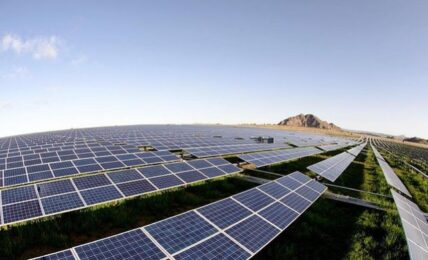Tech giant Microsoft announced the release of its annual sustainability report, highlighting the company’s progress towards its sustainability goals, which include commitments to become carbon negative, water positive, and zero waste by 2030.
While the report indicates significant progress by the company in reducing greenhouse gas emissions from its operations, it also highlights the challenges facing companies in addressing emissions across the value chain but beyond their direct control.
Microsoft reported that its Scope 1 and 2 emissions fell 17% year-over-year, driven largely by the company’s renewable energy purchases. Despite this progress, Microsoft’s full scope carbon emission grew in 2021, as scope 3 emissions, which represent the significant majority of the company’s footprint, increased by 23% last year. Microsoft’s scope 3 emissions increase was driven by a variety of factors, including purchases of capital equipment, emissions related to the construction of new datacenters and offices, and the increased use of products, creating emissions associated with powering products such as Xbox and Surface devices.
In the company’s sustainability report, Microsoft President Brad Smith and Chief Environmental Officer Lucas Joppa wrote:
“We work to limit these emissions when we design and manufacture our products, and work with our suppliers to report and reduce their emissions—but still saw an increase. This serves as an important reminder that Scope 3 emissions are the most difficult to control and reduce. This year has highlighted the challenges of reducing Scope 3 emissions and we’re committed to sharing our learnings to help other organizations who are wrestling with these same challenges.”
Microsoft launched its pledge to reach carbon negative in early 2020, with plans to cut operational emissions to nearly zero, and to reduce scope 3 emissions by more than half by 2030The company has also committed to remove from the environment all the carbon the company has emitted since it was founded in 1975.
The company highlighted several of the initiatives it will pursue in order to address its scope 3 emissions and reach its 2030 goal. These include setting business-group specific annual carbon intensity targets, increasing its internal carbon fee to incentivize more aggressive emissions reductions, and placing a greater emphasis on measurement, helping to accelerate the maturation and adoption of industry standards for carbon accounting. Microsoft said that it is also investing in product development to help customers and partners better manage their own emissions.
Smith and Joppa added:
“As a leading technology provider of sustainable solutions, Microsoft stands ready to support our customers, partners, and the world in the move towards a net zero, environmentally sustainable future. And while the shape of what the future holds is unknown, we will continue to build the foundations needed today and do the work that needs to be done to deliver on our commitments.
“It’s what the world needs us all to do.”
The post Microsoft Reiterates Carbon Negative Commitment as Scope 3 Emissions Jump in 2021 appeared first on ESG Today.


